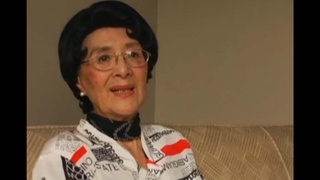Interviews
The find of the century: Chicras (Japanese)
(Japanese) Truly, we were up at the Chancay ruins pretty much every weekend while Amano was still healthy. There is a place where I often visited with Amano and where the Chancay era ruins were - the Chancay era’s. There were two small mountains, gourd-shaped. We knew that they were old ruins. Amano also went many times, climbing up and down those ruins and he thought they were probably about three thousand or so years old. But even though very old, he believed that the site wasn’t something he would be interested in as it wasn’t relevant to his research. So he ended up simply ignoring the area because it was outside of his field of research.
However, about two years ago, by chance, some illegally excavated ruins were found. Upon examination, they found reeds twined into rope and then made into a net, called ‘chicras,’ and used in the construction process. It was the initial discovery of a lot of this material under the mound. When we had scientific dating of the material done in Japan, it was totally beyond our imaginations! We found that the nets were approximately 4,700 years old, plus or minus a few years. The number of about 5000 years old came up, which totally caught us by surprise.
That being said, this was a major discovery from an era long gone in Chancay. I dare say we thought it was a temple or something like that. At the time of the excavation, we knew that the staircase had a pyramid-like construction to it but we hadn’t imagined something that old. We thought there was no way it was that old. However, the results of the carbon-14 dating was about 2000 years older than what we thought. An exceptionally old ruin. We were totally surprised and once we got the results, we began a serious excavation as fast as we could.
Up to this time, the Andes civilizations were said to be about three thousand years old. Civilization didn’t really get started until about one thousand years BCE, or so it said in pretty much any textbook you can find. But at the Chancay valley where we, or rather, Amano was constantly visiting, we had found proof for the first time that it was much older. Well, I think of Chancay as a place that Amano taught me about, or rather, as his gift to all of us. If I didn’t go there with Amano, that discovery might have just been one of a simple mountain—the true scope of the discovery would not have been realized.
Date: May 7, 2007
Location: California, US
Interviewer: Yoko Nishimura
Contributed by: Watase Media Arts Center, Japanese American National Museum


